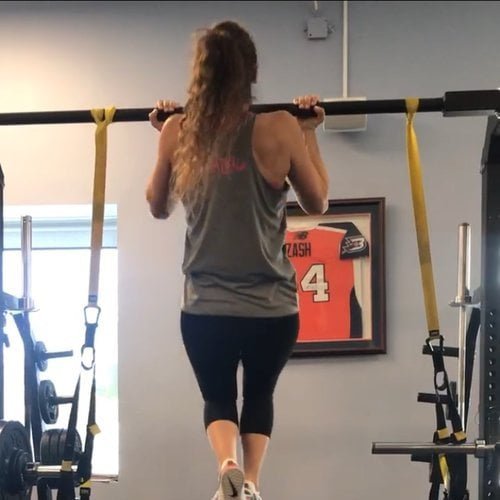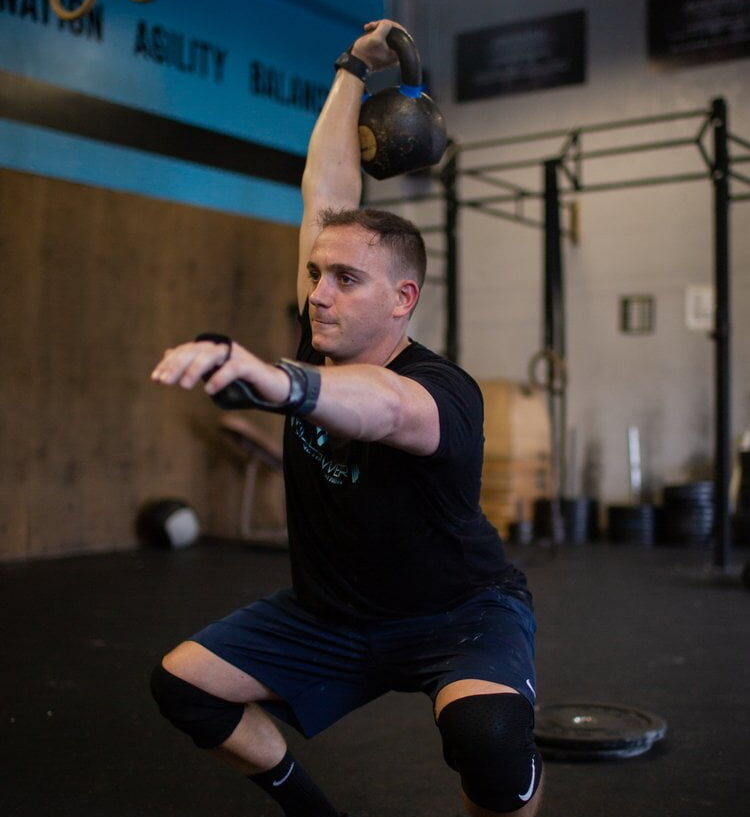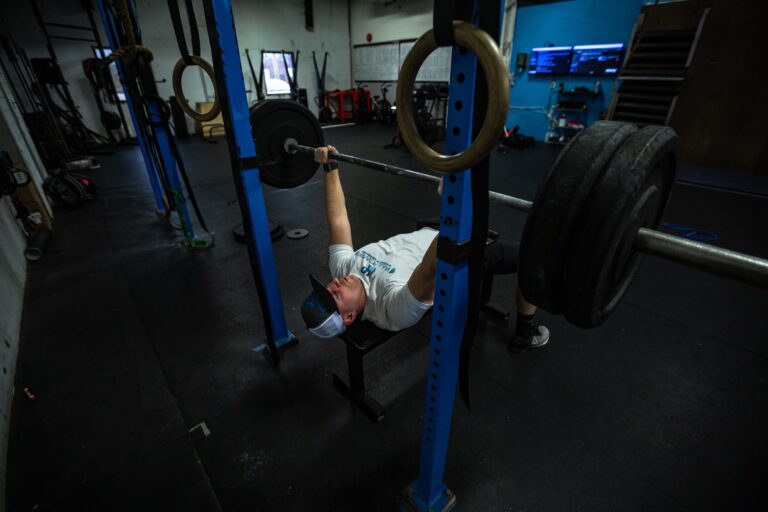Why You Haven’t Achieved Your First Pull Up and A Plan To Get You There
This week were going to go over a movement that sits in at very least, the top five most frustrating movements for athletes and gym goers alike – the pull up. Pull ups, although seemingly simple can frustrate people for years before finally squeaking out a bent elbow, chin only partly over the bar rep. This blog post is going to explain why you may have trouble getting your first pull up and then also provide a progression to help you guys reach your very first pull up, if you’re not already there. If you’re one of the lucky ones who already can do a full pull up, then maybe the issues listed and the progression that follows will help refine your technique or help you squeeze out a few more reps next time you test your pull ups.
1) Frequency
Frequency might be the most important component to training the pull up and eventually accomplishing that first rep. When I say frequency with regards to pull ups, I am simply stating that if you want to get better at pull ups, you need to train them – often. I have often been asked by athletes why they cannot do a pull up, but when I reply asking how often they train them, it is typically once week. To be blunt, that is simply not getting it done if getting a pullup is one of your primary goals. If it is not, then training pull ups once a week in conjunction with your other training is perfectly fine. But, as the old adage goes, if you want to get better at something, do it every day. But I want to be clear, I do not recommend doing pull ups every day, for my sake and your shoulders sake. Training the pull up 2-3 times a week should be perfectly fine. Especially if you’ve built up some fitness and tissue resiliency over time but vertical pulling strength is lacking.
So, you may be asking, why? Why do I need to do this every day? Without diving to far down a rabbit hole in terms of adaptation. It comes down to motor patterning. Your body needs repetition to develop motor patterns and applies to any physical skill. LeBron James did not become a good basketball player overnight. He drilled the techniques over years of practice and Floyd Mayweather did not become a great boxer by practicing golf. Both athletes had frequent, deliberate and specific practice at mastering their craft. Thus, their brains and nervous systems are extremely good at coordinating the movement and recruiting the muscles needed to get the job done. Getting a pull up is no different. You need to practice the movement to get better at it.
2) Strength to Body Weight Ratio
Another roadblock may seem like an obvious one and that is because it is. Simply put, if you do not have the strength in the muscles involved in vertical pulling that are designed to handle your body weight, pull ups will be a challenging endeavor for you. The muscles involved need to be developed to a certain degree in relation to your body weight before a pull up can be a realistic goal. For instance, if someone is two hundred pounds, but can only perform one hundred and eighty pounds on a lat pull down machine, they are simply not strong enough to do pull ups. In this case, the actual movement of pulling needs to be trained using exercises like lat pull downs, banded pull downs, ring rows, bent over rows, etc. Doing so will allow the musculature of the lat, upper back, core and arms to develop to the point where they can overcome your body weight,
The second part of the equation is body weight. If pull ups are a high priority for you, then maybe you need to look at a reduction in body weight to improve your body weight to strength ratio. Reducing your body weight will help give the muscles just mentioned the upper hand in producing the movement needed to elevate your body above the bar.
I know you are probably thinking, yeah no duh. But, often times it is really that simple. If you want to move a load you have two options. You can increase the amount of force placed on the load i.e. the force produced by the muscles of your lat, upper back, core and arms or you can reduce the weight of the load being lifted i.e. your body weight. If this seems like an avenue you’d like to take, you can start by checking out a previous blog titled 7 Steps to Calculate Daily Calories and Macronutrients.You can also start your own nutrition coaching program here.
3) Progression
The final piece to the puzzle may be the biggest factor in populations like CrossFitters that do constantly varied workouts that may include kipping variations of the pull up or Olympic weightlifters that may not see the movement often enough to provide progression. Now before I continue, I want to provide a disclaimer that I am in fact a CrossFitter myself and I fully believe it is the best way to develop an all-encompassing general fitness. However, that does not change the fact that there are principles to getting better at a skill and stronger in a movement and that is exactly what pull ups are – a skilled movement.
The body follows two principles called the SAID principle and the principle of overload when it comes to adaptation. The SAID principle stands for Specific Adaptation to Imposed Demands. Simply put, the body will adapt to the stresses that is placed upon it. For example, if you want to run a marathon, chances are that doing sprints every day is not going to get you to 26.1 miles. If you want to run long distance, you need to run long distances and if you want to do a strict pull up than you need to do strict pull ups. For CrossFitters, that means kipping pull ups are likely not getting you to a strict pull up as fast as strict pull up work would. For traditional strength athletes, that means doing machine cable rows are not going to get you a pull up once the pre-requisite pulling strength has been developed. After the pre-requisite pulling strength has been developed, you need to get onto a pull up bar and start vertically pulling in any variation that allows the movement to be trained. Whether that’s static holds, eccentrics, partner assisted, band assisted, whatever. Just get on the bar.
The next piece is the principle of progressive overload. This states that if you want the body to adapt and get better you need to demand more of what it is accustomed to every time you walk into the gym. When talking about a common movement; the bench press, this would mean adding five pounds to the bar every time you bench. When talking about the pull up, this means holding a static position for 5 more seconds, adding one or two more seconds to the eccentric phase or using a tougher band than the previous pulling session. Maybe it’s not every session, especially if you’re tuned into the frequency piece mentioned earlier. But at the very least each week something needs to be progressed. It doesn’t matter what but something needs to get harder. If the body has no need to adapt, trust me it won’t.
Hopefully, you guys can take this information and apply it to your training! The principles I spoke about today seriously applies to any movement in the gym. If you want to get better at something you need to do it often, have the baseline capacity to do it and take steps towards it in your progression as often as possible. Below I have outlined a sample progression for training the pull up from ring rows all the way to your first rep. Give it a shot and let me know how it goes!
P.S. If you’re interested in leveling up your fitness and staying pain-free while you train, I can help. Just click 👉🏻 HERE and message me “Performance” to learn more.
Pull Up Progression
Week 1
Ring Rows – 3×10 (challenging angle) x 2-3/week
Week 2
Static holds (chin over bar) – 3 x :01-:30 x 2-3x/week
Week 3
Static holds (chin over bar) – 3 x week 1 +:05 x 2-3x/week
Week 4
(If you’ve reached 3x:30)
Eccentric pull ups – 3×5 w/ 3 sec descent (jump up) x 2-3x/week
Week 5
Eccentric pull ups – 3×5 w/ 5 sec descent (jump up) x 2-3x/week
Week 6
Eccentric pull ups – 3×8 w/3 sec descent (Jump Up) x 2-3x/week
Week 7
Banded Pull Ups (Heavy) 3×5 x 2-3x/week
Week 8
Banded Pull Ups (Moderate) 3×5 x 2-3x/week
Week 9
Banded Pull Ups (Light) 3×5 x 2-3x/week
Week 10 (Test)
Banded Pull Up (heavy) – x5
Banded Pull Up (Moderate) – x3
Banded Pull Up (light) – x1
First Strict Pull Up Attempt – x1+







